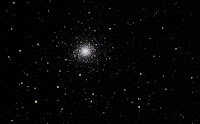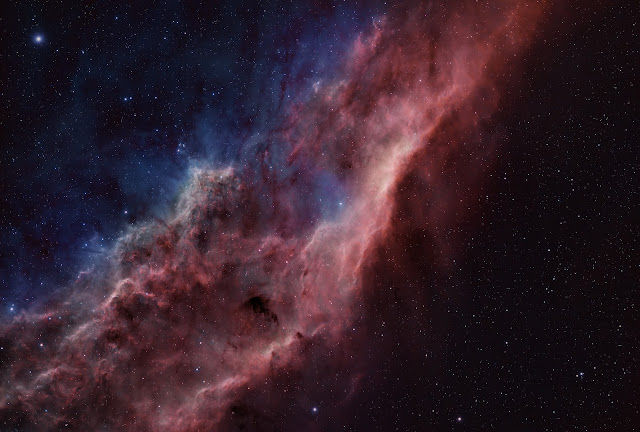
After Spending some time in the realm of Hercules I let a finger decide in what direction I should travel. I headed north skimming slowly across the underbelly of Draco when a globular caught my attention. Near to it was the wispy tendrils of a galaxy. It was very faint but as the moon was setting behind the trees skies were lovely and dark. After confirming where I was I took a quick test shot and yippee a lovely little face on galaxy lent me a few photons of it's light.
now the tekkie stuff
Spiral Galaxy NGC 6946 and Open Cluster NGC 6939 are located about 2 degrees southwest of Eta Cepheus.
NGC 6946 is a 9.7 magnitude spiral galaxy that was discovered by William Herschel on September 9, 1798 and is about 10 arc minutes in diameter.
It is a relatively close galaxy at a distance of about 10 million light years, and was once suspected by Edwin Hubble of being a member of the Local Group of galaxies that includes the Milky Way, but today it is not believed to be a member. Because we are looking at it through the plane of our own galaxy, it is highly obscured by dust.
NGC 6946 is sometimes called the Fireworks Galaxy because of the number of supernovae that have been discovered there and the galaxy's prodigious rate of star formation.
By contrast, open cluster NGC 6939, seen about 40 arc minutes northwest of NGC 6946, is located inside of our own galaxy at a distance of approximately 5,800 light years. It is just by coincidence that these two objects lie close to each other in the same line of sight.
NGC 6939's total brightness is about 8th magnitude and it contains about 80 stars in its 8 arc-minute diameter and its brightest member is about 12th magnitude.
We have here 92 30 second unguided frames No Flats or darks. total 46 Minutes
It feels so good to get out there again!!!!!



